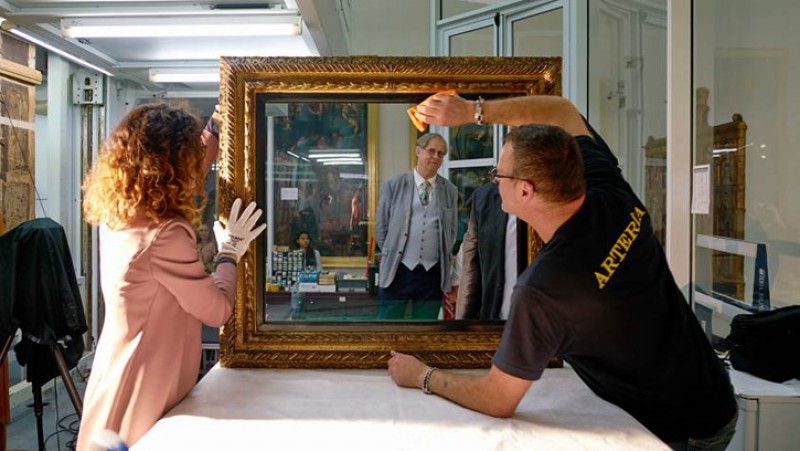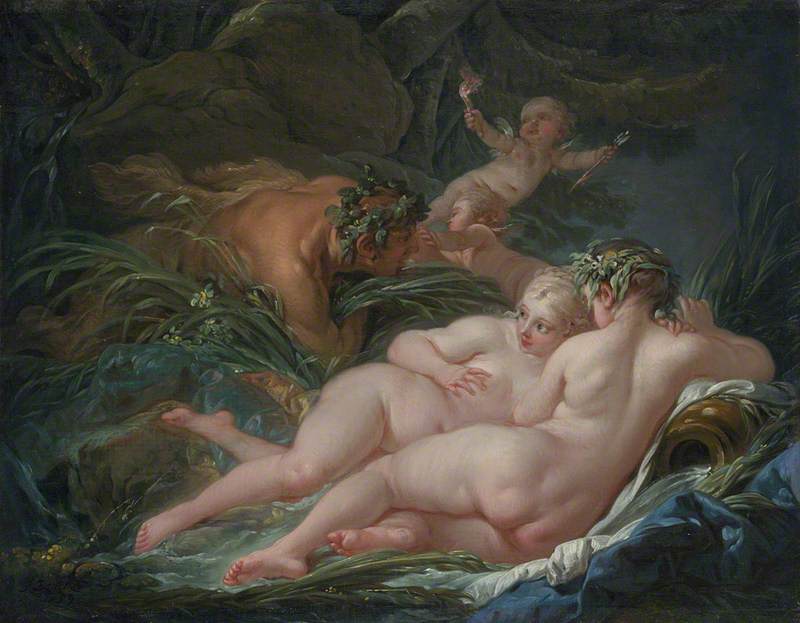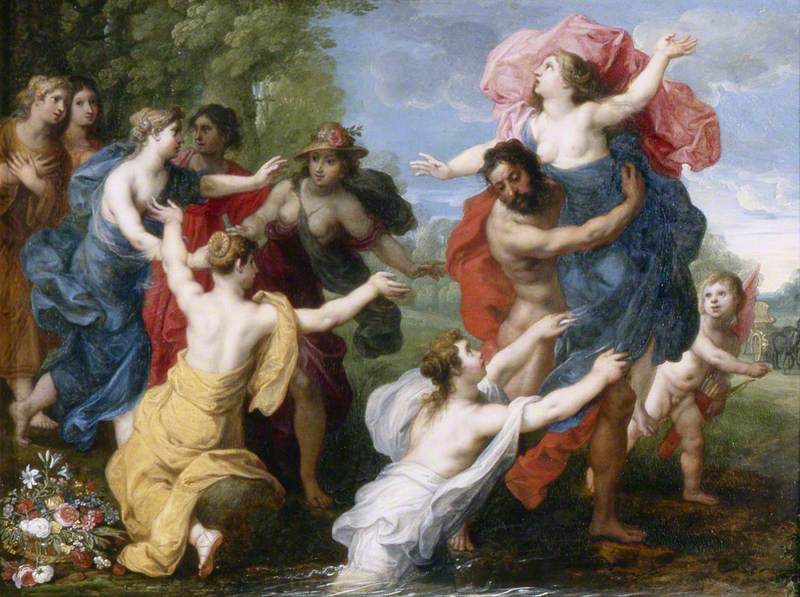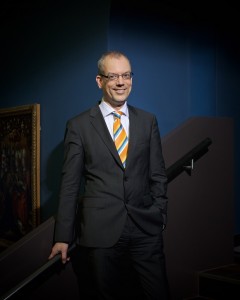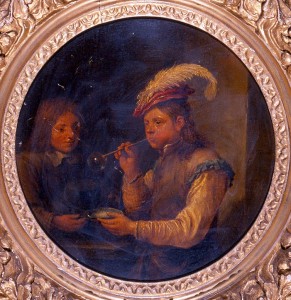Next year, 2017, is the 2000th anniversary of Ovid’s death. Along with the Bible, Ovid’s poetic narrative compilation of Greek and Roman myths, Ovid’s Metamorphoses was one of the most important sources of imagery for Renaissance artists, especially after the rediscovery of Lucretius’ Epicurean poem De Rerum Natura by Poggio Bracciolini in the early fifteenth century, which re-opened the door for pagan imagery to a Catholic Europe in a moment of extreme cultural ferment.
Ovid’s compendium covered a wide variety of transformations into animal, vegetable, mineral and celestial forms – of gods in order to take advantage of the virtuous, or conversely, of nymphs, chaste maidens and faithful wives being transformed to escape the attentions of the gods. As part of creating ‘inhibitions’ that bring invited works into a visual dialogue with works in its permanent collection, a strategy adopted to combat the cannibalistic effect on museums of temporary blockbuster exhibitions, I can imagine a timely ‘dialogue’ on the occasion of Ovid’s anniversary that brings together the Brera’s Pan and Syrinx by Jan Brueghel the Elder together with the work by the same name and one of the same artists from the National Gallery in London. In classical mythology, as recounted by Ovid in Book I, Mercury tells the story of the nymph Syrinx, who was a follower of Artemis known for her chastity. Pursued by the lustful Greek god Pan, she ran to the river's edge and pleaded for help from the river nymphs. In answer to her pleas, she was transformed into hollow reeds that sounded a haunting melody when the angry and frustrated god blew across them. Pan cut the reeds to fashion the first set of panpipes, which were thenceforth known as syrinx.
To round out the dialogue, we could invite the painting Pluto and Persephone by Hendrik van Balen I (1575–1632) and Jan Brueghel the elder (1568–1625) held by the Brighton and Hove Museums and Art Galleries, which shows another Ovidian subject. In Greek mythology, Persephone (in Roman mythology Proserpina) is the daughter of Zeus and the harvest goddess Demeter (for the Romans, Ceres) and Homer describes her as the daunting co-ruler of the underworld, who inflicts the curses of men upon the souls of the dead. Persephone was married to Hades, the ruler of the underworld. The myth of her abduction, told by Ovid in Book V, represents her as the personification of vegetation, which emerges from the earth in spring and returns to it after harvest. In Classical Greek art, Persephone is invariably portrayed robed, often carrying a sheaf of grain, but is most commonly shown in the act of being carried off by Hades.
The Pinacoteca di Brera (the Brera Picture Gallery) contains one of the world’s most important collections of Italian paintings. Founded on the site of a convent, the building passed to the Jesuits in 1572, and underwent a radical rebuilding by the architect Francesco Maria Richini from 1627 to 1628. It shares the palace with Academy of Fine Arts, the Istituto Lombardo for the sciences and the arts, the city’s oldest observatory and botanical garden and the Braidense Library, founded by Empress Maria Theresa of Austria when the Jesuits were disbanded in 1773. The picture gallery was born as a resource for the artists of the Academy of Fine Arts, and benefitted from the numerous confiscations made by Napoleon during his conquest of northern Italy in the late eighteenth and early nineteenth century.
James Bradburne, Director General of Pinacoteca di Brera, Milan
